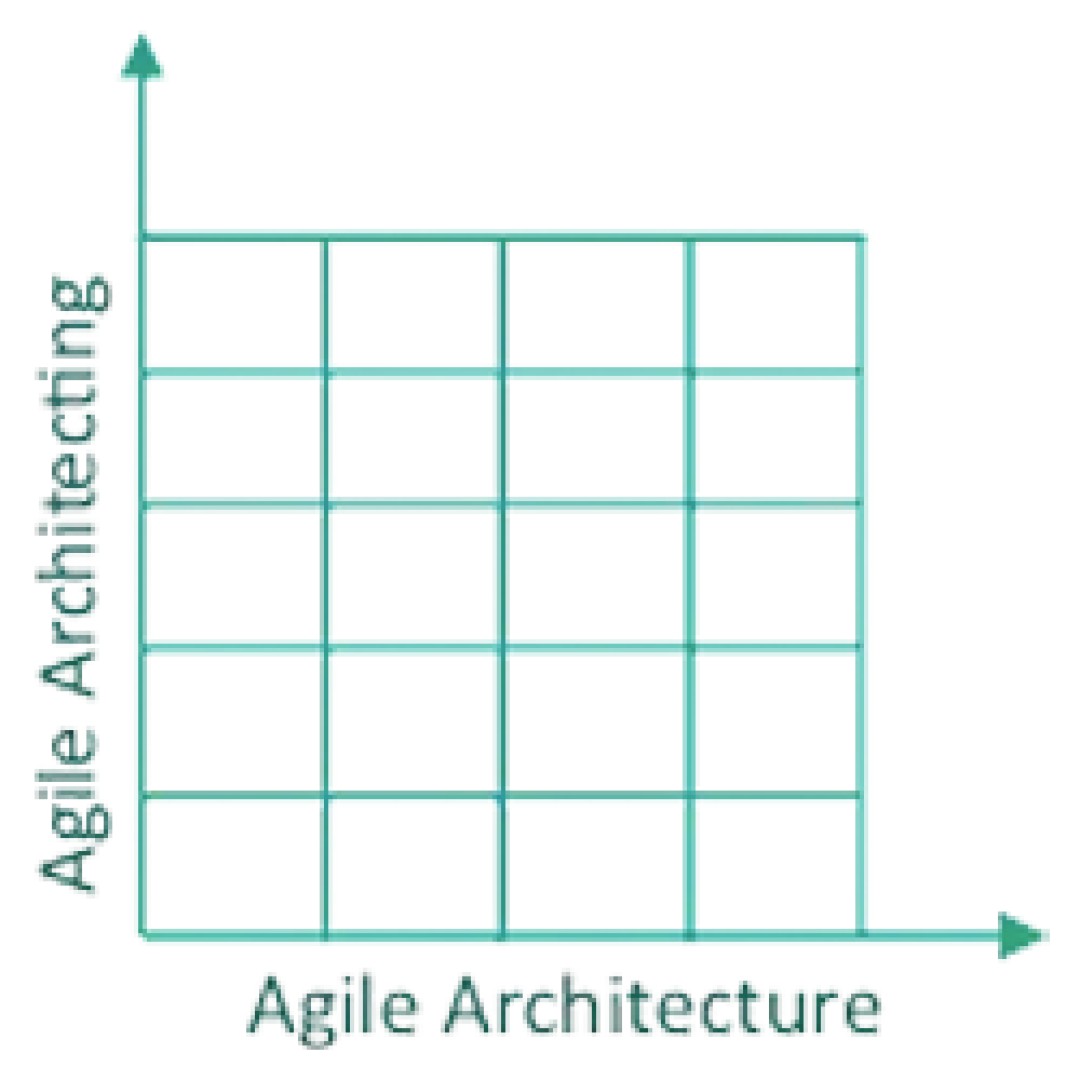The hidden dimension of agile architecture
The hidden dimension of agile architecture
There is a critical question to ask before diving deeper into agile architecture and the behavioral side of transformation: How do we define agile architecture?
A typical response is something like the architecture an organization must have to achieve business agility. The agility ambitions typically represent adapting quicker to market changes, meeting customer demands faster, delivering value incrementally, or increasing employee satisfaction by increasing autonomy, for example.
This perfectly defendable answer mainly focuses on the structural side of the architecture, though. The structure that the organization must attain, the processes and workflows to organize, enabled by information and technology systems that are swiftly and efficiently adaptable.
Agile Architecting
More rarely is it described as the ability of the architects and architecture practice to deliver work in increments while delivering business value with each increment, where the increments represent weeks instead of months or years.
At INNOCOM, we refer to this dimension as agile architectING, which points towards the ability of the architects to work in short and value-added increments. In contrast to the agile architectURE dimension, which represents the properties the organization's architecture must have to achieve agility.

Do you need both dimensions?
Well, not necessarily; you can argue that building an architecture to increase the organization's business agility can be approached in a more traditional or waterfall-like approach, and on the other side of that spectrum, you can make the organization rigid while having a "well-performing" agile architecting capability. But in practice, we see a correlation between the two dimensions. More often than not, architecture organizations that succeed in increasing business agility are more mature in the agile architecting dimension.
They develop practices to work towards agility, allowing them to correct their course based on observation and evidence moving forward in short increments. Driven by the probe > sense > respond approach, highlighted in the article 'Is agile architecture truly a thing'?
These course corrections are hard to achieve when applying a more traditional or big-design up-front approach as feedback cannot be incorporated timely into the design process, which is essential to becoming agile.

Does your agile architecting dimension need work?
Some tell-tale signs can help you to spot this. Listening to the feedback of the organization is a good starting point. If there is a general complaint that the architects "aren't agile enough," there is a first indication. When delivery teams evaluate the work of the architects as "not actionable enough," there is a second hint. A third hint comes from how architects and senior leaders communicate. Is that in “certainties” or scenarios and acknowledging the known unknowns? Finally, there is room for improvement when the architects' planning isn't synchronized with the teams' planning.
What can we do to start improving the architecting dimension?
- Develop your feedback loop(s): ask the organization for feedback and learn how the architects are helping them succeed. You can use the question "How can we help you to become successful?" to signal your intention to help, which can aid in creating a safe space to receive meaningful feedback.
- Revisit if you are aligned with the value delivery cycle: are you working in short cycles or iterations? Are the iterations aligned with the teams? And is the work you are planning, at least in part, in the function of helping the teams to deliver successfully? If not, alter your approach to align with the team's iterations and actively plan your work together.
- Create a continuous improvement cycle and (team) culture: once you are established in receiving feedback and working in short iterations, you are all set up for continuous improvement. Every cycle, there is an opportunity to make a small gain.
Want to gain more insights?
Stay tuned for upcoming articles in our — Navigating a New Paradigm: Agile Architecture and the Behavioural Side of Transformation — series, where we delve further into the practical and human aspects of agile architecture, enriched with case studies, scientific insights, and actionable strategies for success.
Let's Continue the Conversation
Eager for more? Please share your experiences and challenges with agile architecture. Your stories fuel our following insights.
In your organizational transformation journey, embracing an agile mindset — both in architecture and behavior — can be the game-changer. Keep learning, stay agile, and, most importantly, be ready to transform.
Contributions by Mattias Vral and Erik Coopman



